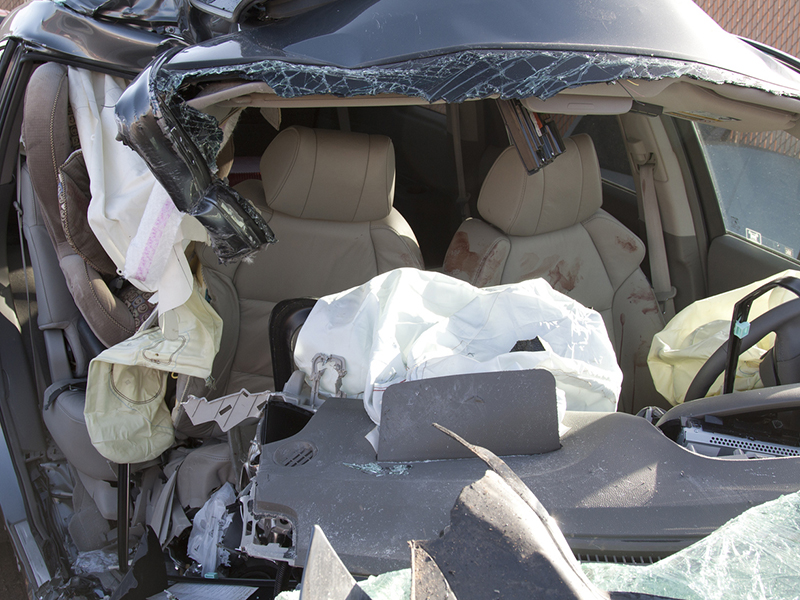
How bad Canada’s auto loss ratios are getting
September 11, 2020 by Greg Meckbach

Print this page Share
The Canadian industry’s loss ratio in auto liability has deteriorated for the fourth year in a row, A.M. Best Company Inc. has reported.
Meanwhile, the loss ratio in “auto personal accident” deteriorated nearly 10 points. It increased from 70.4% in 2018 to 80.3% last year, A.M. Best said in its annual report on the state of Canada’s property and casualty and life and health insurance industries, released Sept. 8.
“All auto lines remain exposed to loss frequency brought on by factors such as distracted driving and more miles driven. In addition, inflation and a continual increase in loss severity due to rising repair costs are still affecting the auto lines,” Oldwick, N.J.-based A.M. Best said in the report, entitled COVID-19 Taking Its Toll on Canada’s Economy and Insurance Industry.
Auto personal accident is essentially the same thing as first-party accident benefits. The federal Office of the Superintendent of Financial Institutions requires insurers to report their auto results in three sub-categories: liability, personal accident and other.
Results for those three lines have varied in recent years, A.M. Best reported Sept. 8.
In personal accident, the industry’s loss ratio in Canada was 80.3% last year, a 9.9-point deterioration from 70.4% in 2018. A.M. Best’s auto industry statistics for Canada do not include the Lloyd’s market or the Insurance Corporation of British Columbia.
In liability, the loss ratios rose steadily, at 62.3%, 67.3%, 71.4% and 73% in 2016, 2017, 2018 and 2019 respectively.
The personal accident line’s sharp rise, from 2018 to 2019, followed two years of steady improvement, from 89.6% in 2016 to 70.4% in 2018.
The loss ratio in the “other” category of auto improved from 83.6% in 2018 to 77.1% in 2019, reported A.M. Best.
The other category could include optional coverages such as collision and upset.
In Ontario, the industry’s auto loss ratio is not sustainable, said Mary Kelly, chair of insurance at the Wilfrid Laurier University school of business and economics in Waterloo, in an interview earlier this year. At the time, Kelly was commenting on numbers from the General Insurance Statistical Agency and not on A.M. Best statistics.
The overall loss ratio in 2018 in Ontario auto was 76%, said Kelly, co-author of a 2013 paper called The Impact of Regulation on the Availability and Profitability of Auto Insurance in Canada.
In an interview this past March with Canadian Underwriter, Kelly noted there is plenty of competition in Ontario auto, with dozens of carriers writing auto insurance. This gives consumers more choice than they have with other products and services. Kelly cites banking, telecommunications, air travel within Canada and supermarkets as examples of industries with far fewer players (and more concentration of market share) than Ontario auto insurance.
Ontario auto had at least seven different overhauls of the product since 1990, Kelly noted.
“It’s pretty hard to price when you can’t use past information to predict what future claims might be and that’s going to lead to more fluctuation in your loss ratio.”
Feature image via iStock.com/Farm66
Ridiculous article that is comparing numbers from 2018 and 2019.
The statement below is even more ridiculous considering a large majority of people are working from home, leaving parked cars in the driveway. It only goes to show there will be less risk of accidents! Come on people!!! Stop gouging the public with outrageous car insurance quotes!
“ “It’s pretty hard to price when you can’t use past information to predict what future claims might be and that’s going to lead to more fluctuation in your loss ratio.””
Anyone questioning insurance premiums should try and start a business and price your product with no idea what the final cost will be when you sell it to a customer.
That’s what insurers try to do , guess what the product will cost them over time. Almost an impossible thing to do. Also, a large majority of claims are fraudulent . Deal with that and premiums will come down. When the body shop asks you if you are lying f or insurance is and they raise the price if insurance is paying that is part of the problem ,The public needs to stop thinking insurance is something to ” get your money back from”
Anyone complaining about the increase in auto premiums sure hasn’t been paying attention to the marketplace – or the factors that go into determining risk.
Sure am happy to be in a province with Public auto and introducing no fault.